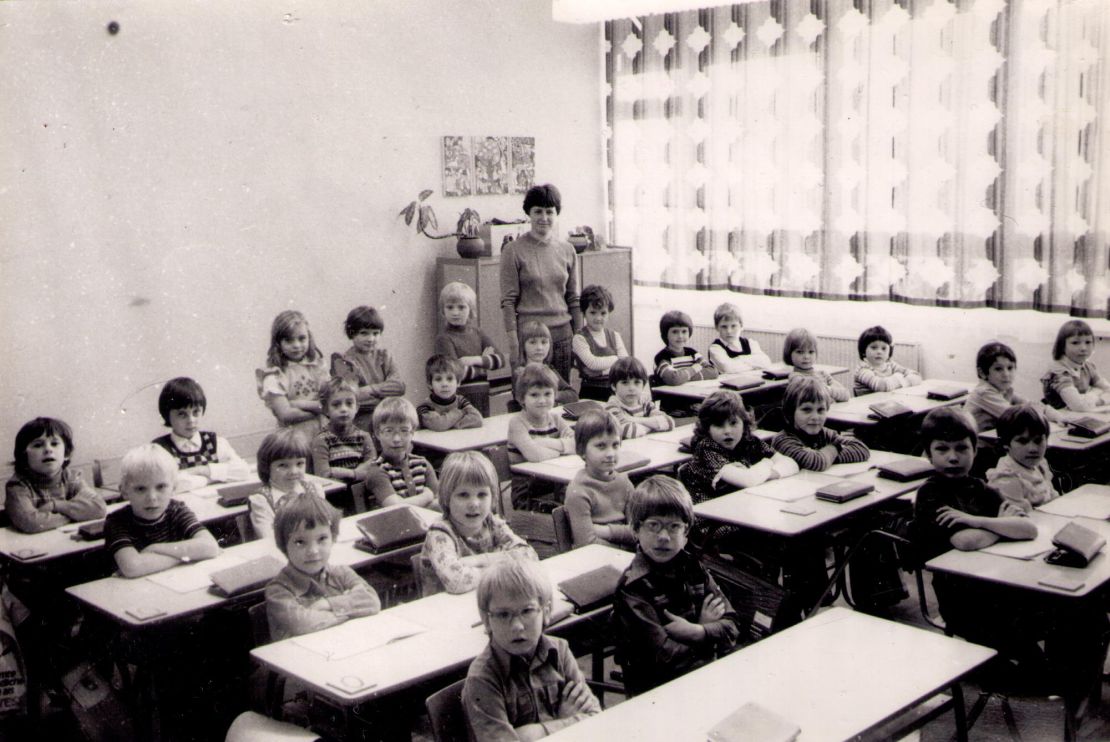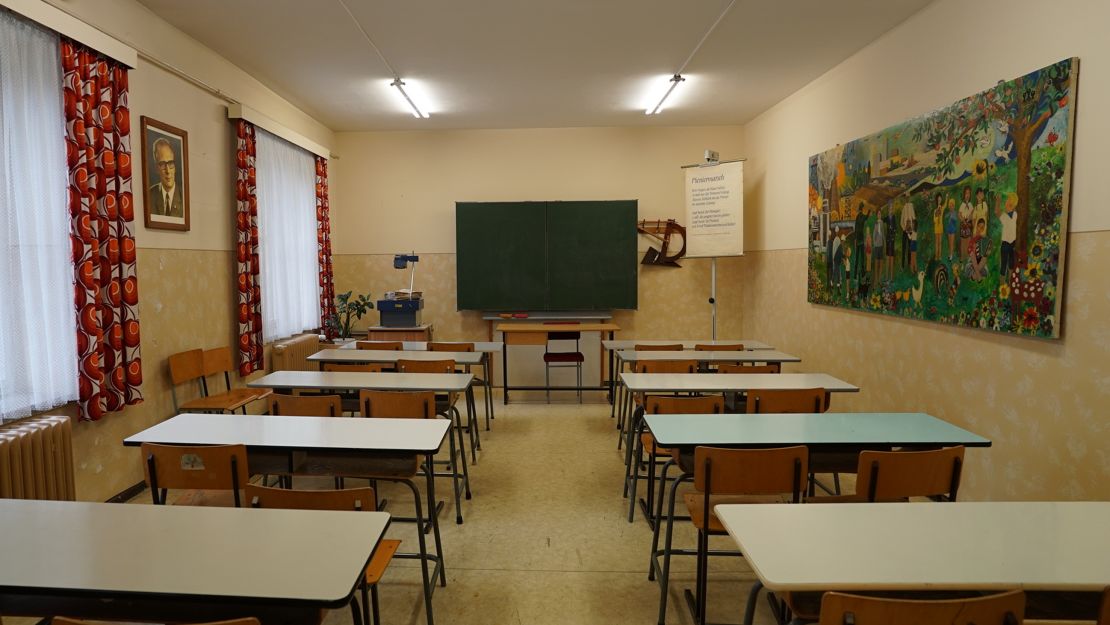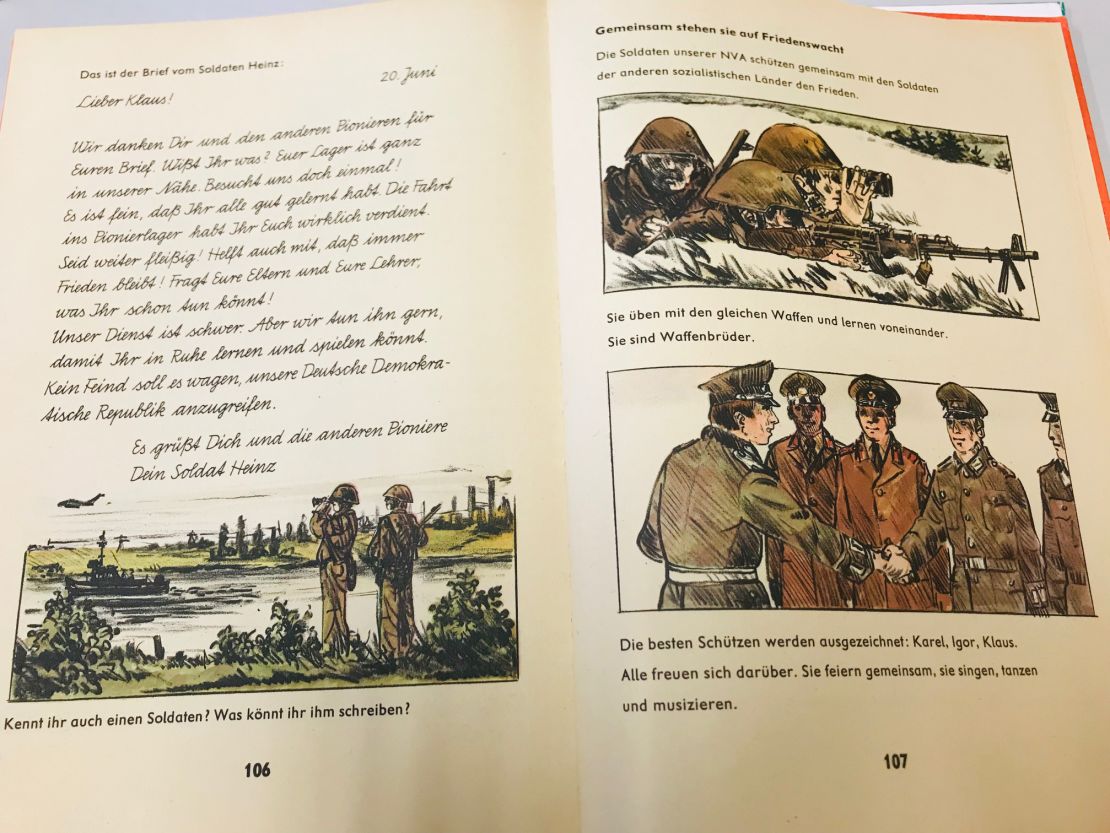The morning after the Berlin Wall came crashing down in November 1989, nine-year-old Thomas Töpfer was one of the few East German kids who turned up for school.
He found his teacher in tears and half his classmates gone, having fled with their families to the West.
Everything Töpfer and his fellow pupils had been taught to believe had collapsed overnight.

This week marks 30 years since the wall fell, paving the way for German reunification in 1990. Amid the momentous redrawing of the nation, the school system of the German Democratic Republic (GDR) was also overhauled.
In the months that followed, the syllabus was scrapped. Teachers underwent retraining. And joining the country’s official youth organization – known as the “Pioneers” – with its distinctive neckties and caps was no longer a rite of passage for every pupil.
The children who grew up under the former communist regime are all grown up now. But their years of education there left a lasting impression.
A political education
In some ways, Töpfer never really left an East German classroom. Today he is director of the School Museum in Leipzig, a city around two hours drive from Berlin, that was also home to the peaceful revolution that helped bring down the wall.
Stepping inside the museum is like tiptoeing into a time machine. A recreated East German classroom features rows of rickety desks and chairs pointed towards a blackboard. Hanging nearby is a portrait of Erich Honecker, General Secretary of the Socialist Unity Party of Germany until 1989.
The classroom walls are adorned with paintings of communist utopias – workers in flowery fields and scientists diligently tapping away at nuclear control boards. Textbooks with Lenin’s silhouette on the cover line the shelves. Even the curtains have authentically garish retro patterns.

In the early years of the GDR from 1949, schools played a central role in “educating this new society,” said Emmanuel Droit, professor of contemporary history at the University of Strasbourg.
By the time the Berlin Wall was built in 1961, the regime’s grip had tightened. The main goal of schools was now to “control the minds and bodies of pupils,” said Droit.
A big part of this indoctrination was the Pioneer program.It resembled a Scout association – but with a twist: songs around the campfire were more militaristic and stories featured Socialist heroes defending the self-defined peace-loving state from the big bad West.
The welcoming ceremony for new Pioneer recruits was “almost something mystical, something holy,” remembered Robert Schleif, who grew up in Leipzig and was 19 when the Berlin Wall came down.
As a six-year-old boy he was “very excited” to become a Young Pioneer – the first of three ranks organized according to age.During his initiation, children created a “shrine” to the socialist state, in this case, a bust of Communist Party leader Ernst Thälmann draped with dirty workers’ hats.
Socialism was rooted in almost everything the Pioneers did, said Schleif, now a 49-year-old consultant at a flooring company in Leipzig Once a week, local factories would give the children tours, introduce them to workers and explain how the machines worked.
‘The West is bad’
Back in the classroom, political propaganda was rife. “We were always told: ‘The West is bad but here in the East we are all good. We are progressives – we love peace. The others are the ones threatening us,’” said Schleif.
Children quickly learned to censor what they said to certain teachers out of fear they were informers, said museum director Töpfer. Historians describe the youngsters as “double-tongued” – parcels sent from relatives in the West, for example, were discussed at home but not at school.
“Some people say children were educated to lie,” said Töpfer.

They had good reason to. Senior teachers regularly reported “hostile” or “negative” individuals to the Stasi secret police – in “much the same way you or I would file our tax returns,” said Mary Fulbrook, Professor of German history at University College London.
It was a “slightly irritating but normal task,” she said.
Like any school, pupils distinguished between teachers they liked, and those they distrusted. In the GDR, the stakes were much higher.
Saying the wrong thing to a particular teacher, could “put a black mark on you for the rest of your life,” said Fulbrook. Such a student might be barred from doing the school leaving exam, studying certain subjects at university, or even going to university at all.
As for the emotional toll this had on young people, there was the “full spectrum,” said Fulbrook. “From terror and fear at one end, through to not really caring very much about it and treating it as normal at the other end.”
‘Good morning children’
Not all teachers agreed with this curriculum. Elke Urban was a music and French teacher, also in Leipzig, who quit in the mid-1970s to look after her five children.
At least, that’s what she told bosses. In reality Urban, now 69, found “the political pressure was too great.”
“I grew up in a Christian pacifist household,” she said, adding that she refused to sing the school’s military songs or do the Pioneer salute.

Each lesson would begin with a distinctive salute. Teachers would say: “For peace and socialism be ready.” And students would reply in chorus, “always ready,” while simultaneously moving their right hand to the middle parting of their head.
“That always repelled me,” said Urban, who instead greeted her pupils with a simple: “Good morning.”
While the curriculum was “set in stone,” teachers did have a degree of freedom to focus on particular aspects behind closed doors, said Urban.
A new era
By the time Schleif graduated in the summer of 1987, the Soviet grip on satellite states like the GDR had begun to weaken. For the first time, open political discussion was happening in East German schools.
“We were still careful about speaking aloud,” said Schleif. “But we were no longer intimidated as we were before.”
When the Berlin Wall finally came down on November 9, 1989, so did the GDR’s education system.
Textbooks showing cartoon soldiers defending the mighty Soviet state no longer held true. Military singalongs rang hollow.

Teachers were forced to report if they’d ever worked for the Stasi – though whether they answered truthfully is up for debate. “Most teachers were afraid since they just lost the floor under their feet,” said Urban.
She was one of the school administrators who began working with counterparts in the West to craft a new school curriculum. They discovered that while East Germany lagged behind in humanities, it excelled in sciences.
In pictures: The rise and fall of the Berlin Wall
By the time of reunification in 1990, all of the state schools in what had been East Germany had been dissolved. They were replaced with a national education system that pretty much resembled the West German model.
Still, it took a while for public trust to be restored in its teachers, says Urban, who was also one of the founders of the Free Education initiative that supported alternative school models like Steiner or Montessori.
That said, East German schools did have redeeming features,such as lessons that were “geared towards practical day-to-day life,” according to Urban. Students regularly visited factories, and they “learned a lot from this,” she said.
They were brought up respecting the working class, “who worked very hard under often difficult circumstances,” she added.
Flick through one of the old textbooks in the Leipzig School Museum today and you’ll find the odd graffitied pictured of Lenin, or a sprinkling of teenage obscenities.
After all, East German children were still children, said Töpfer. “They laughed, they made jokes, they got up to mischief,” he added. “Just like anywhere.”










































